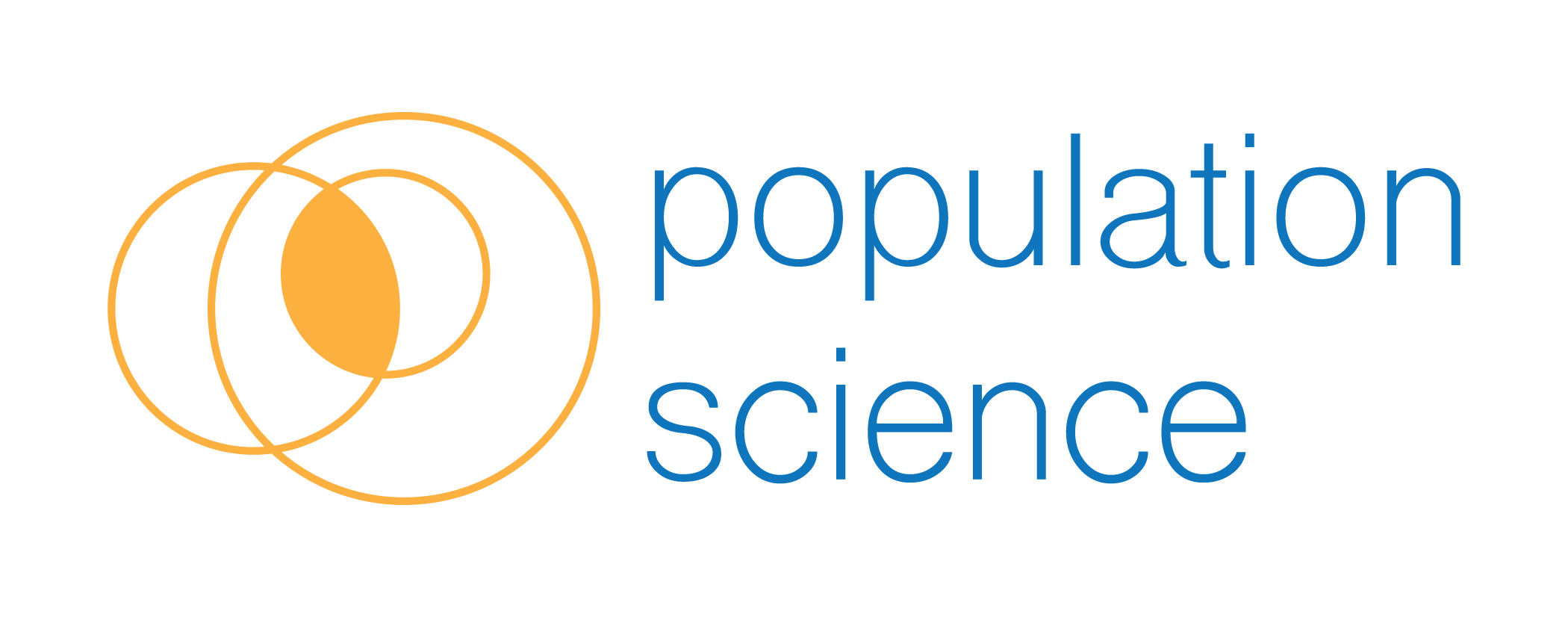
by Population Science | Jan 28, 2020 | Digital Marketing, Industry News
As Google plans to phase out 3rd party cookies in Chrome by 2022, there are a lot of unknowns that need to be sorted out in the next two years. With little in the way of answers for how retargeting, conversion tracking, attribution, and 3rd party data targeting will work (if at all) one thing is certain: paid digital video ads will play a significant role in the post-cookie era.
For starters, video has already been increasing in popularity. Every month 85% of Americans connected to the internet watch streamed video. By 2022 82% of all internet traffic will be from video. This will mark an increase of 15x from 2017. The massive expansion of digital video content has already attracted marketers, but the end of cookie tracking will only increase the rush into paid video for one big reason: log-in data.
Log-in data is the holy grail of personalized ad targeting. This is why Google and Facebook have been able to gain such a large share of digital advertising spend to date. Their properties have massive audiences who are logged in so they can easily track them.
Here are four major opportunities for advertisers to reach large, targeted audiences at scale without requiring cookies:
YouTube
Many people do not realize that YouTube is the second most visited website behind Google.com and ahead of Facebook. Not only does YouTube have more visitors than the world’s largest social network, users spend more than twice the amount of time on the site compared to Facebook. YouTube is incredibly popular with younger generations, but its usage is growing with older people as well.
Connected TV
Connected TV (CTV) has not been around very long, but its rapid adoption has sent cable companies and content producers scrambling to adjust to the brave new world of cord cutting. Every major content company has a streaming app available on Smart TVs and connected devices such as Roku or Apple TV. Further, new streaming services are popping up to bring even more content options to viewers. CTV is attracting large brand dollars due to the ability to target specific viewers rather than broad audiences on traditional TV. It is also providing an opportunity for smaller advertisers to get into TV ads who were previously priced out.
Social Networks
If you spend any time on social networks it is clear that video is becoming more prominent. So much so, that one Facebook executive predicted that Facebook would be all video and no text by 2021 (although TikTok may already be filling this niche). While we cannot forecast which social networks will have the most active users 5+ years from now, two things are certain: social networks are not going anywhere and video will play an increasing role in the content of social networks.
Premium Publisher Content
When people think of digital video they typically think YouTube or Vimeo, much like people think Google or Bing for search. That said, a major difference in the digital video space is there are thousands of other high quality websites and apps with large user bases that are worth advertising on. Large scale independent publishers like the NY Times and content networks like Verizon Media (Yahoo, Huffpost, Rivals, TechCrunch, and many more) are also adding more video content to their ranks. These smaller publishers and networks do not have the scale of YouTube. However, when accessed programmatically their collective reach and scale surpass YouTube.

by Population Science | Jan 21, 2020 | Industry News
Industry News – January 21, 2020
Innovation and change in the ad tech and mar tech spaces happened at a dizzying pace over the last decade. With the start of a new decade I fully expect the roller coaster ride to continue. I’m making bold predictions about how ad tech will evolve over the next ten years:
-
The Walled Gardens will crumble: Facebook and Google will be forced to split up their publishing and ad businesses. There isn’t much that both parties in Washington have in common these days, but they both have Google and Facebook (and Amazon) in their regulatory crosshairs. Google and Facebook control around 80% of all digital ad spend (with Amazon rapidly leveraging their vast ecommerce/data platform to catch up). With no viable competitor to any of these companies, the government will be forced to step in and break up their respective monopolies. The result will be a boost for programmatic as walled garden inventory will once again be available via exchanges.
-
Medium to small online advertisers will go programmatic. DSPs, data companies, and others that comprise the programmatic ecosystem have spent the 2010s going after enterprise clients. As the enterprise market becomes saturated, these companies will start to develop methods that make their solutions easier and scalable for advertisers with smaller budgets. These advertisers will be more than willing to ditch Facebook Business Manager and AdWords for DSPs that give them access to more platforms (Connected TV, Digital Audio, Digital Out of Home to name a few) and more data solutions.
-
Cable TV will go the way of dial up internet. The growth of streaming video content has been staggering. Currently, about 80% of households stream at least some portion of their video content every month. As more households become accustomed to using devices such as Apple TV, Roku, etc to access their video content, the desire to pay for bloated cable packages will continue to crumble. By the end of the decade we will finally realize the a la carte model for TV content via streaming services. The impact for marketers will be immense with vastly improved targeting options for TV ads.

by Population Science | Oct 31, 2019 | Industry News
Industry News – October 31, 2019
In a shocking move Jack Dorsey conveniently took to Twitter and announced that his company will no longer allow political and issue-based ads (click here to view the thread). My instant reaction was disappointment. I always had Twitter in my media plan for political and cause-based campaigns when the budget allowed.
What makes Twitter such a great platform for political and issue-based campaigns? The short bits of information Twitter was designed for is great for hot takes. If we know anything about political commentary today it’s all about the hot take. I understand Twitter doesn’t have the reach of other platforms, but nobody talks about “Trump Facebook Posts.” It’s the “Trump Tweet” because that’s the place to share hot takes and spark conversation.
In my opinion the timing of this announcement is nothing more than a PR stunt. Coming on the heels of Mark Zuckerberg vehemently defending Facebook’s stance on allowing political advertising on its platform Twitter is taking a shot at its much larger social media competitor. The question everyone in the political advertising space is asking themselves is whether or not Twitter’s stance will contribute enough additional pressure on Facebook to drastically limit or pull political ads from its platform altogether.
In the short term I believe Facebook will not bow to the pressure and continue to allow political and cause-based ads for the 2020 cycle. In the long term it may not be up to Facebook whether or not they continue this policy. We have already seen the first state take measures to effectively ban Facebook from running political ads. Many other politicians (both state and federal) have floated ideas of further regulating political ads.
I believe that Facebook is one more political ad scandal away from shuttering its political and issue-based ad business (either willingly or via regulation). One of three things will likely happen when the next scandal erupts:
-
Facebook will get ahead of the fallout by voluntarily shutting down their political and issue-based ad business.
-
Major brands will start pulling ads in protest (in the name of not wanting their brands associated with the offensive/false political content).
-
Government will force the issue.
So what does this mean for political and issue-based advertising going forward?
I think advertisers will be safe sticking with their plans to use Facebook (sans Washington) in the 2020 cycle. That said, as Elizabeth Warren’s campaign recently pointed out Facebook still makes it very easy to promote fake political news on its platform.
I believe the next major scandal with Facebook is inevitable and likely will occur during the 2020 cycle. Facebook is already not complying with their ban on these types of ads in the state of Washington. Political and issue-based advertisers should start testing other channels to reach their audience now. As Twitter has demonstrated Facebook could come out of nowhere and shut down their political and issue-based paid media business.

by Population Science | Oct 29, 2019 | Industry News
Industry News – October 29, 2019
Population Science was on hand in Dallas last month for this year’s Lend360 conference. We love this conference because it showcases the latest advances in FinTech. It’s also great to see so many familiar faces and discuss new approaches to how data-driven programmatic advertising can help their businesses.
The FinTech space is not dissimilar from other B2C verticals where reengaging past customers is just as important as prospecting for new ones. Traditionally FinTech has relied on email, direct mail, and SMS to re-engage past clients. Unfortunately that isn’t enough anymore. As inboxes (and mailboxes) get more cluttered it’s becoming harder to stand out.
The biggest takeaway from this year’s conference for me was how programmatic CRM retargeting is moving to the forefront in terms of importance for financial technology marketing.
Programmatic CRM retargeting allows companies to engage past customers on all of their connected devices, across a wide variety of channels, while managing frequency across channels and devices. This omni-channel opportunity allows marketers an opportunity to efficiently maximize their opportunity to engage past customers with offers to return for more products and services.
CRM retargeting is a tactic we will be implementing or expanding for all of our clients in 2020. To learn more about how CRM retargeting can make an impact for your business contact us today for a consultation.
We look forward to Lend360’s return to Chicago in 2020 and the opportunity to review campaign successes with our clients (and maybe meet new clients in the process)!

by Population Science | Sep 10, 2019 | Company News
Company News – September 10, 2019
I’ve spent the last 12 years of my career working across all aspects of the advertising and marketing technology space, and the launch of Population Science reflects the culmination of my diverse experiences and passion for the digital ecosystem.
With Population Science, my focus will be providing programmatic media buying and data strategy services to clients who want to bring their customer acquisition practices up to speed with the latest and greatest in technology
Many of you will likely find yourself in one of these groups:
-
You work for or with a brand that doesn’t know much (if anything) about programmatic
-
You know about programmatic but have been priced out
-
You don’t have the internal expertise or resources to launch/manage a campaign
-
You feel like your data strategy could use a new perspective
If you can relate to any of these, I’d love to talk with you about how Population Science can help.
Through my time working in the space, I’ve identified a need for bringing programmatic technology to agencies who don’t have the platform or expertise to offer these services to their clients, as well as in-house marketing teams who cannot afford to find or hire direct talent to implement programmatic campaigns (or don’t know where to begin). Through partnerships with both agencies and in-house marketing divisions, I’m excited to help teams leverage new technology to bring the right message to the right audience on the right device at the right time.
I’m also passionate about sharing the power of this technology with small to medium-sized businesses who may have previously felt that they didn’t have the resources or expertise to implement something like connected TV or digital audio. As an entrepreneur myself, working with growing businesses is something I truly enjoy on a personal level, and I know from experience that even a modest budget, we can see mighty results.
I’ll be joined in this venture by my wife, Emily, who brings a wealth of experience as a brand and content strategist working for various agencies and in-house teams. Together, we look forward to evaluating your brand, marketing, programmatic and data strategy holistically and providing a seamless full-service experience from initial strategy to content creation and execution to analysis.
We’re ready to get started and we hope you are, too! Send me an email and let’s grab coffee or set up a call to chat about how we can help take your marketing to new heights.
Cheers!
Johnathan Barnes
Principal and Founder





